Discover the complete history of Farmall, from the early days of McCormick and Deering to the latest models, in Farmall (Voyageur Press, 2015) by Randy Leffingwell and Robert N. Pripps. The following excerpt discusses how IHC decided to expand their market beyond farm equipment and trucks.
You can buy this book from the GRIT store: Farmall.
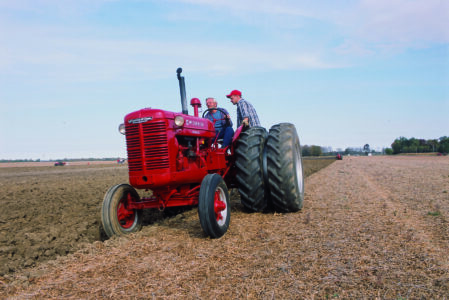
1945-1954: As Focus Changes, Vision for the Future Blurs
World War II engaged McCormick’s imagination. Through the diversity of wartime products IHC manufactured, McCormick came to believe his corporation no longer needed to be strictly a farm equipment and truck maker. With nearly 100,000 workers in seventeen plants, sales increased more than $100 million each year (about $1.3 billion today) during the war. McCormick had money to expand product lines and to buy new factories to build them.
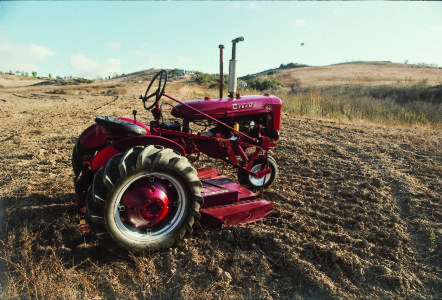
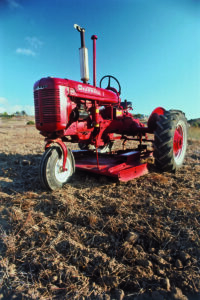
The Tractor Division staked its share of development money on a compact machine meant for the small two- or three-horse farm. Here the Naming Committee broke form. The letter-series Farmalls beginning in 1939 with the Model M reached Model Es in the early 1940s (with jumps to H and A). In various meetings, everyone referred to this new prototype as the Farmall X or the F. Now, in September 1945, public relations man Art Seyfarth, patent attorney Paul Pippel, engineer Sperry, and the five other committee members named it the Cub. IHC’s Sales Department aimed 45 percent of total Cub production at the east and southeast.
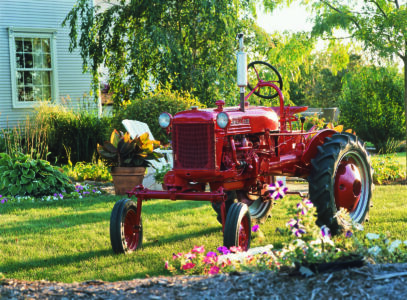
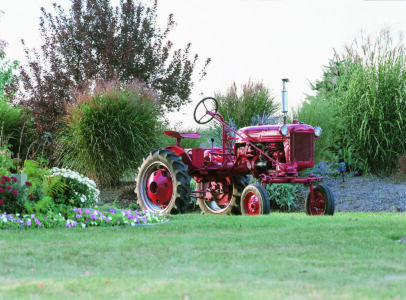
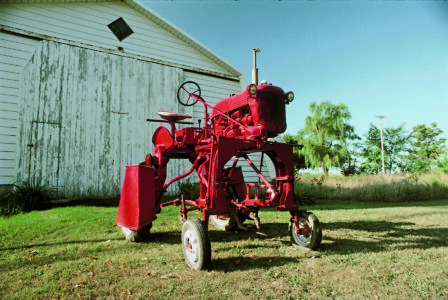

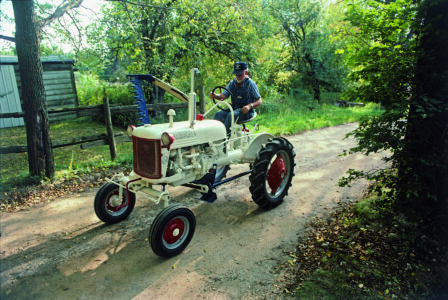
Production began in Louisville, Kentucky, late in 1947. Nearly 135,000 rolled out over the next four years. Half the purchasers were first-time tractor buyers replacing horses or mules on farms where the Cub was the only tractor. In 1945 30 percent of the United States, about 1.6 million farms, still used only draft animals. Cotton, tobacco, poultry, and vegetable-truck farmers favored the Cubs, as did people who farmed part-time or maintained large gardens. The largest proportion was farms of 10 to 19 acres.
At the other end of the size spectrum, McCormick’s perceptive but forceful friend, McCaffrey, IHC’s vice president, found a growth industry in construction. To reward his work and ideas, IHC’s board elected McCaffrey president and chief operating officer in 1946.
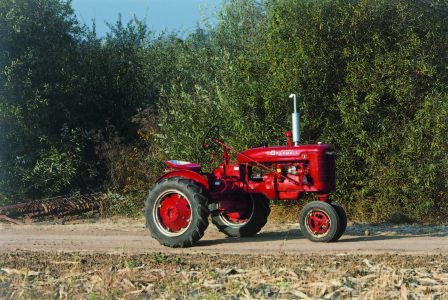
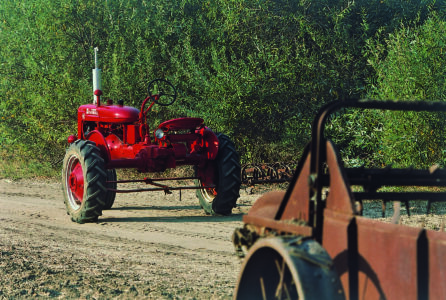
Competition seemed futile. Caterpillar sold $230 million ($3 billion today) in equipment in 1945, compared to IHC’s $35 million ($460 million today). Cat had a postwar advantage from GI heavy-equipment operators who learned Cat’s machines and told their peacetime bosses what to order. To McCaffrey, Cat made a big target. IHC’s attack came through a $30 million ($395 million today) investment that included acquiring a former government manufacturing plant in Melrose Park, Illinois. In 1947 IHC’s Industrial Power Department introduced the TD-24. It weighed 36,000 pounds and developed 148 drawbar horsepower. Sperry conceived it and Baker designed the giant, providing buyers with 10 horsepower more than Caterpillar’s D-8 and more sophistication than Cat’s track clutch/brake system. The Sales Department, which had hurried development, was pleased.
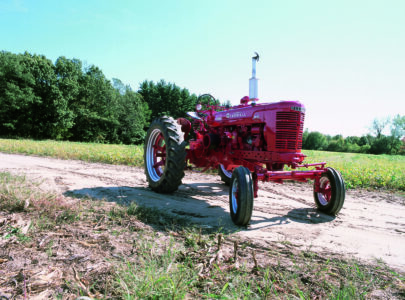
McCaffrey had sold trucks in Ohio before moving to IHC’s Chicago headquarters, and this background didn’t prepare him for agricultural equipment. Throughout his career, he had little understanding of farm equipment markets. But he had a feel for construction. As with trucks, bigger was better and more powerful was more useful. McCormick wasn’t done expanding, however. IHC’s line of 1907 cream separators led to coolers when 1930s laws required farmers to refrigerate fresh milk within an hour of milking. From wartime field hospital blood-coolers, McCormick envisioned a full line of refrigeration equipment. In 1946 he bought a plant in Evansville, Indiana, and within a year IHC turned out two hundred freezers a day, then adding humidifiers and air conditioners. By the early 1950s, IHC led in freezer sales, and refrigeration sales more than doubled from 1950 through 1953.
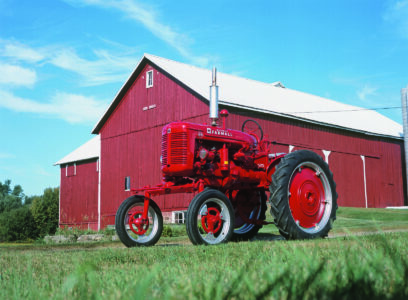
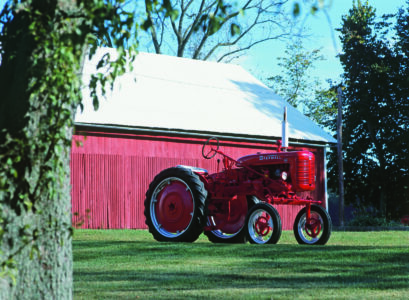
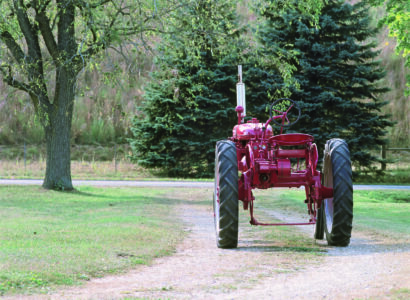
Alfred P. Sloan, General Motors’ brilliant chairman, had outlined his mission during a 1921 interview to provide “a car for every purse and pocketbook.” He inspired generations of businessmen. During Cyrus McCormick Jr.’s time, IHC produced tractors for every farm and function. In the mid-1940s, Fowler McCormick paid more attention to GM and saw a separation of divisions that made sense to him as president of the “general motors” of farm equipment. McCormick had strengthened Farm Tractor, Industrial Equipment (encompassing portable power units, industrial and construction machinery), Motor Truck, and Refrigeration Divisions, as well as a Steel Division, and Fiber and Twine (which supplied his harvesters). He gave each its own experimental and research departments, sales organizations, personnel, and administrative departments.
While this provided McCormick’s divisional autonomy, the duplication of so many functions and executives eventually proved extraordinarily costly.
Sloan’s interpretation of decentralization left one central leader to make course corrections among the scattered divisions. Chairman McCormick, by several accounts, created a different system. Sloan was a director who trusted his vice presidents and managers to make everything but the most critical decisions or long-range plans. For these he was always and immediately available. McCormick’s variation put more trust in his subordinates because the chairman often was unreachable and far away.
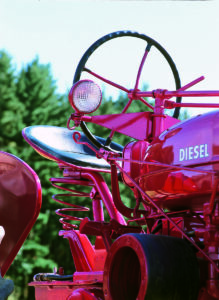
All the McCormicks traveled. Cyrus Sr. sold harvesters; Cyrus Jr. set up factories in Europe. Harold inspected plants worldwide. Fowler, as head of Foreign Sales, visited Europe and Russia. But not all his travels were business. Overworked during war years, he continued afterward to expand IHC’s vision. To manage stress, he spent months in Switzerland with Dr. Jung, the psychologist and psychiatrist who was his mother’s favorite. McCormick developed pneumonia in late 1947, and for reasons never explained, he kept this secret from his executives and directors. Even after nearly dying, he let only McCaffrey and a few others know that, in relocating to Phoenix, Arizona, he was following his doctor’s advice. It was something that was “not discussed.” As a still-active board chairman, he took work with him–boxes of it. He communicated with McCaffrey by phone or mail. He looked into a dedicated telephone line to McCaffrey, an early attempt at telecommuting. But McCaffrey felt the $1,020 monthly charge (about $10,800 today) was too extravagant. Without instantaneous communications from McCormick, McCaffrey followed his own inclinations more easily.

McCormick’s extended absence confused his directors. They concluded he didn’t care about IHC. When projects drifted off course, few people alerted him, or knew that they should. McCaffrey’s job grew without McCormick there to handle future planning and budgets. Problems required quick decisions. Complications arose in cleaning and retooling Louisville Works from wartime production. Extra labor and facilities costs in 1946 and 1947 tapped budgets of raw materials for tractor manufacture. Tooling had to be stored, delaying Cub production and, later, the Farmall C. Labor costs remained but there was no offsetting income from tractor sales. (IHC had owned 39 percent of the farm tractor market in 1940. Although its factories worked to capacity, the overall market grew, and its share slipped to 31 percent by 1949.) A report to the Farm Tractor Division on June 12, 1952, spelled out the damage clearly:
From 1946 up to the end of 1949, Louisville Works had a cumulative operating loss of $21,594,000 [$215 million today]. To the end of 1952, the average investment at Louisville during most of this time has been approximately $50,000,000 [roughly $500 million today]. As pointed out, we have not only had no return on this investment, but have . . . very high fixed costs, depreciation alone being in excess of $3,000,000 per year [approximately $27 million today].

The figures were grim; reality was getting worse. Delays in tooling up Cub and Model C production threw off outside parts suppliers. Searching for revenues, they bid other projects that started up more predictably. When IHC was ready to assemble the Louisville tractors, suppliers often couldn’t comply. IHC’s huge labor force, supported by union contracts that limited the corporation’s flexibility, was not always available when parts arrived. If certain portions of assembly slowed or stopped while waiting for parts, Louisville Works managers could ask union members to work another job. The contract gave workers the right to refuse. They could go home. Then other portions of assembly backed up, waiting for workers.
One other labor problem confronted the Tractor Division, at this point run by Hale, another sales vice president without manufacturing experience whom IHC’s board had named a division manager. Between 1950 and 1954, Farmall and Louisville plants suffered a high, average-annual employee-turnover rate due to resignations or layoffs from production slowdowns or assembly-line changeovers. From the beginning of each year to the next, two out of three employees changed.
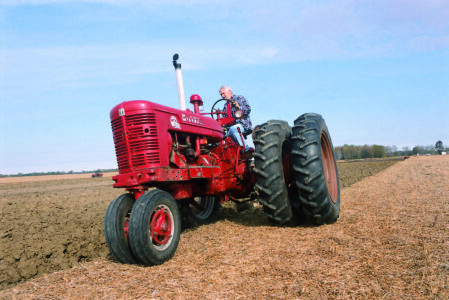
McCormick blamed McCaffrey for the company’s failings, even among unions against whom McCormick had exercised a traditional McCormick family animosity. But other faults did lie with McCaffrey, including his almost insatiable hunger for power. In early 1951, McCormick, concerned for the future, tried to boot out his former friend. He hoped to force a showdown: McCaffrey or McCormick. But the board, especially the older outside directors, resented his intrusion. They chose McCaffrey, granting him McCormick’s chief executive officer title as well. McCormick was forced into an inactive EC and board position. That July, the board promoted Brooks McCormick. He had moved from Melrose Park manufacturing to Truck Sales in Kansas City, Missouri, and then to district manager for General Sales in Dallas, Texas, in 1950. Before coming to world headquarters, his job was joint managing director of IHC’s British operations at Doncaster.
As the McCormicks journeyed through the world in an almost hereditary repetition of styles, so did they put distance between themselves and daily corporate responsibilities. There was, almost from the first, from Cyrus Sr., a kind of noblesse oblige, a sort of behavior that gave the message to their directors that “we have others to do this work with us. We trust their abilities as much as our own.” With Cyrus Sr., it was his younger brothers Leander and William who ran things; with Cyrus Jr. it was Funk and then Legge. For Fowler it would be McCaffrey. It was as if, even though machines and buildings were named after them, the McCormicks adhered to a genetic family blueprint that told them to trust others to manage some portions of the business in the McCormicks’ best interest. They behaved as though programmed to give others responsibilities, to bring in other perspectives, to seek diversity in management, often letting others take the credit, even when the McCormicks believed they could do it better than those they’d handpicked. This “shared responsibility” style of directorship built the company but ultimately hastened its end.
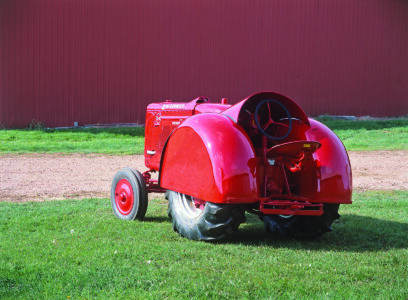

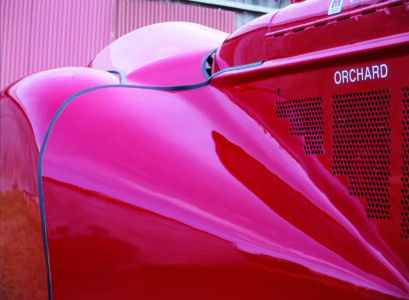

HALE’S TRACTOR DIVISION’S highest labor turnover was at Louisville–72.4 percent annually. Production and labor conditions there led McCaffrey and the EC in 1953 to consider moving the entire production line of the new Farmall 300 to Kentucky from Farmall Works before regular production began to stabilize the workforce. A study indicated that such a move would save IHC $400,000 a year ($3.55 million today) in tractor shipping costs, but the relocation itself would cost $5 million ($44 million today).
McCaffrey’s enthusiasm for construction equipment fueled expansion and improvements in IHC’s crawler line. Impetus for transmission development came from the field. “There has been an insistent demand from the field for a hydraulic drive for the TD-24. In response, the Engineering Department has developed, in cooperation with the Allison Division of General Motors, a combination torque converter and powershift transmission which can be introduced into the basic TD-24.” Throughout late 1947, the big crawler’s insufficient development time began to show. Gears overheated, failed, and in some instances, shattered inside the cases. A torque converter reduced the shock from the engine to the drivetrain. Even more important, when an operator stalled the tracks, they could keep the engine running and the hydraulic controls functioning. The first torque-converter prototype went to the US Navy in April 1953 for testing. However, increasing financial constraints meant the Engineering Department built fewer prototypes and had shorter testing periods than necessary on new projects. Rather than slowing new product approval, McCaffrey encouraged more construction equipment into life.
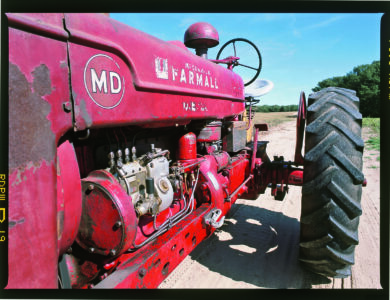
Gross sales from the Tractor Division for 1953 reached $257.6 million ($2.28 billion adjusted for inflation), but that dropped by $100 million in 1954 ($880 million today) to $156.6 million ($1.38 billion today). Shipments to dealers decreased by almost half, from 14,601 in 1953 to 7,952 in 1954, taking division net income down steeply from $18.9 million ($166.3 million today) to $5.4 million ($47.5 million adjusted for inflation). Truck sales beat farm equipment for the first time in 1954, and would exceed it by half again in 1956. McCormick’s reorganization made each division responsible for itself. Budget tightening resulted from price cuts on Farmall Hs and Louisville tractors because IHC began slicing inventories before releasing the hundred series.
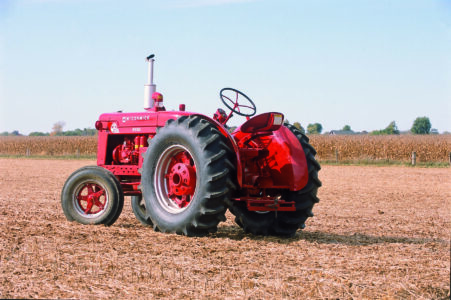
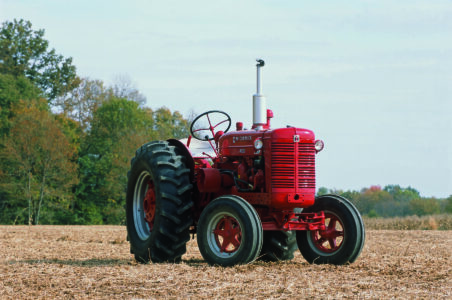
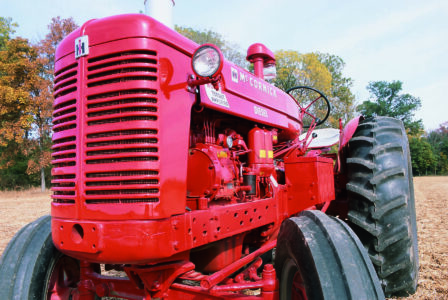
In mid-1954, as introduction of the new Farmalls approached, IHC began to feel the cash flow slow down. The company responded by shipping tractors rapidly and randomly. In August, McCaffrey received letters from several branches complaining that “a sizeable quantity of tractors [had] been shipped to territories for which they were not suited.” He learned from General Sales that “errors had been made in this distribution but . . . many of the tractors originally shipped had been sold and [they were] confident that the remaining units would be moved in due time.” Thirty years before this, as inventory of soon-to-be-obsolete tractors swelled, Legge had the excuse of Ford’s price war to move out Titans and Moguls at any price before the McCormick-Deering 10-20 and 15-30 Gear Drives arrived. Legge also had a much more solid financial footing with which to survive the losses.

By October 1, 1954, McCaffrey recognized that IHC’s sales projections of $1 billion ($8.8 billion today) for the year were too optimistic. Peter V. Moulder, executive vice president for Tractor and Implements Divisions (and former truck sales manager), summed up the bad news:
“Results were very poor in spite of drastic economy measures taken, particularly at Louisville Works. . . . As you know, this [was because] estimated production for 1955 represents only 31 percent of the tractor capacity of that works.” Unfortunately, even though Louisville could produce more, there were no customers. In 1953, 42 percent of IHC’s farm tractor sales were in Farmall A, C, and Cub ranges of 9- to 24-horsepower tractors; 30 percent went to Super M sales, the 40-horsepower- and-up-class tractor. The remaining 28 percent was split between H (25- to 29-horsepower) and Super H (30- to 34-horsepower) models. The new Farmall 300, replacing the Super H, would move a tractor into the previously vacant 35- to 39-horsepower bracket.
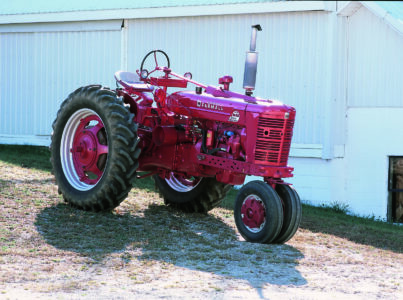
A Sales memo decreed that this move “opens up for consideration increased horsepower for the 200 model which replaces the C and will probably be in the 25- to 29-horsepower category. By increasing the horsepower even further it could be moved up into the vacated 30- to 34-horsepower category where there is a big market.” Nature was not alone in abhorring a vacuum, and so the proliferation of IHC models was self-perpetuating.
This system should have plugged every hole. Yet the broadening product lineup missed the mark. Industrial growth during and after World War II pulled 1.5 million families off farms. Many who remained bought their neighbors’ land and needed bigger equipment to work holdings that encompassed a half section or more. By 1954, some 130,000 farmers or ranchers worked 1,000 acres or more. Owners of fewer than 3 percent of the farms bought 9 percent of the tractors in the United States.

Taking cues from the auto industry, IHC, like Ford and Deere & Company, introduced a new, improved tractor model every other year. As engine developments increased tractor performance, some horsepower categories filled and others emptied. In several instances, farmer demands for tractors sent IHC scrambling, as happened in mid-1955. Certain territories sold high volumes of diesel M and M-TA (Torque-Amplifier) tractors, but IHC ended production of those in October 1954. While Engineering completed preproduction development of the new Farmall 350 Diesel (using a direct-start Continental engine) to introduce in 1956, McCaffrey authorized the Tractor Division to look into acquiring outside-built engines. (R.M. Sheppard, Cummins, and Detroit Diesel eventually provided repowered engines for larger 450-series models.)
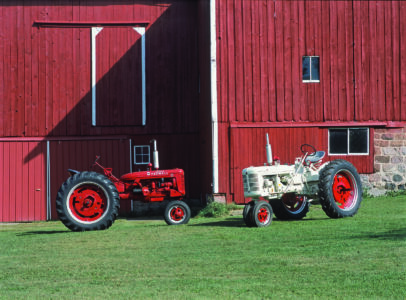
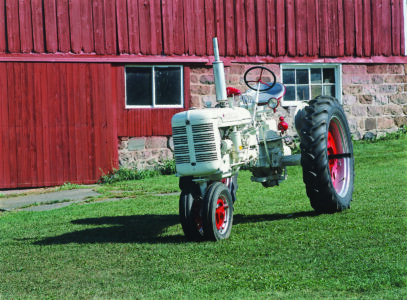
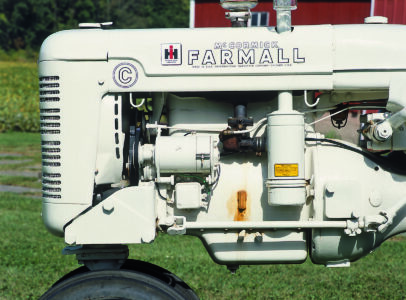

McCaffrey’s model proliferation occasionally blurred lines between McCormick-Deering-Farmall farm-tractor lines and the International Utility models. Throughout the history of the Cub, Super C, and Super M tractors, IHC became aware of Utility buyers using the solid-axle tractors for farming purposes. This continued with 300 Utility models, the W-4 replacements, to such extent that 87 percent of first-year sales went onto farms. R. W. Dibble, general sales manager, likening these to Ford-Ferguson N-series tractors, encouraged this application and set up dealer strategies to further promote it. The Tractor Division added diesel-engine and high-clearance versions to the International 350 lineup. These duplications began to resemble the overlap of Titans and Moguls.
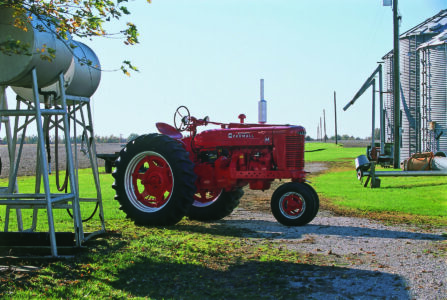

Steadily decreasing revenues strained budgets. Debt increased from building and equipping factories and acquiring outside resources. These, coupled with a sales-force-driven corporate strategy, forced management to tighten development schedules further. By the late 1950s, this issue arose regularly in EC meetings. Referring to cylinder head difficulties with diesel engines used in tractors, combines, trucks, and power units, R. M. Buzard from National Sales challenged McCaffrey over “the possible impairment of new product development as a result of the demands made on the time of Company personnel to assist in the correction of current problems. Such practices serve to extend current product difficulties to the future and the realization of future sales [is] dependent upon the early introduction of new equipment.”
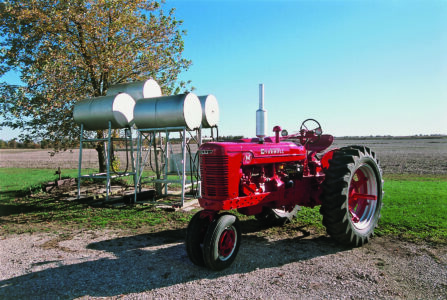
This was the conundrum facing McCaffrey: Diminishing resources forced him to cut corners. His sales background created sympathy for IHC personnel who moved product. He had little understanding of those who invented or manufactured it. To McCaffrey, when a prototype or two worked, especially when they incorporated proven technology, there was no reason to delay production. Sales, to justify accelerated development requests, began exaggerating sales potential. Manufacturing designed the assembly line and ordered raw materials to meet sales projections and it “priced” the tractor (or truck, combine, crawler, or refrigerator) accordingly. Labor needs were organized prior to assembly.
In February 1956, Mercer Lee, from Finance, gave McCaffrey some sobering figures. “The present production program is in excess of the revised sales estimates by 17,000 trucks and exceeds current retail sales experience by 15,000 tractors,” he said, and “current material stocks were estimated at $26,000,000 in excess of the budget.” (That would amount to about $226 million today.) From a financial perspective, IHC was nearly out of control. Eventually, sales reports would come in two forms: projected and estimated. The former was the number hoped for; the latter was the realistic expectation. Surely somewhere they had a column labeled “actual.”

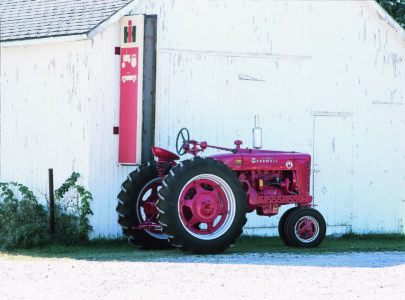
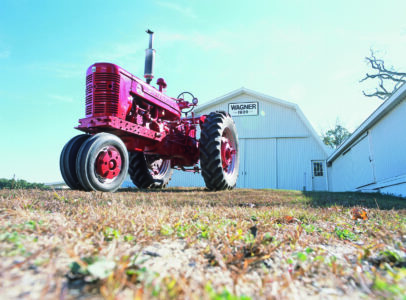
IHC’s sales slipped where it made its largest investments. Refrigeration products never reached mainstream urban retail outlets such as Sears, Wards, and Penney’s. Company stores were in the country; once farmers had refrigerators and freezers, that market (barely 2 percent of the nation) was saturated. McCaffrey faced becoming a “white goods” maker, offering stoves, sinks, washing machines, and driers–another huge capital investment. A merger of big manufacturers into a conglomerate owned by Sears, Roebuck & Co. (much as IHC was in 1902) claimed most of the business, and McCaffrey unloaded the struggling Refrigeration Division for $19 million in 1955 (equivalent to $165 million today).
Learn more about Farmall’s growth and expansion in The History of Farmall Tractors: 1930-1935.
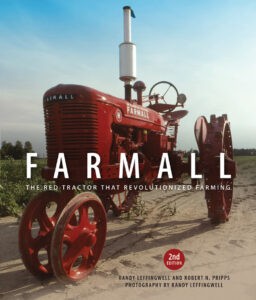
Reprinted with permission from Farmall: The Red Tractor That Revolutionized Farmingby Randy Leffingwell and Robert N. Pripps, published by Voyageur Press, 2015.




